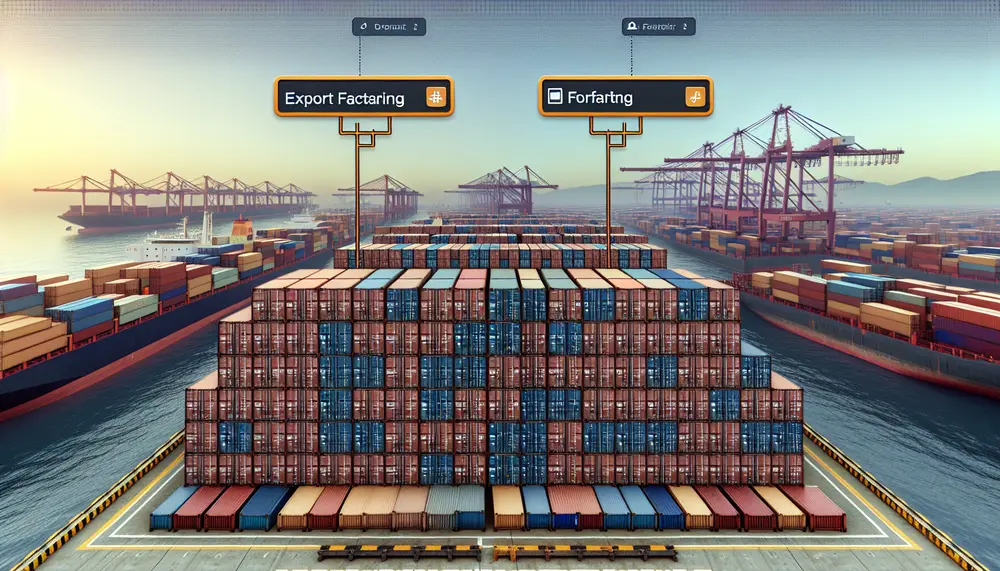risk management
risk management
What is Risk Management in Financial Factoring?
Risk management is a crucial concept in financial factoring, where businesses sell their invoices to a third party at a discount, to receive earlier payment. This process involves managing and assessing risks associated with the advance funding of invoices. Effective risk management ensures that both the factoring company and the business selling the invoices can operate with a clear understanding of potential financial losses and take steps to mitigate them.
Why is Risk Management Important in Factoring?
Financial factoring exposes a company to various risks including credit risk, fraud, and operational risks. Efficient risk management strategies protect the factor, which is the company purchasing the invoices, from the possibility of a debtor failing to pay the invoice amount. It allows factoring companies to set reasonable advance rates and reserve amounts based on the risk profile of their clients' debtors.
Key Components of Risk Management in Factoring
Risk management in factoring comprises several steps. It starts with due diligence, where the factor evaluates the creditworthiness of the debtor. It also includes continuous monitoring of the debtor's credit status, proper documentation, and legal frameworks to recover funds if necessary. In addition, setting clear factoring agreements, which detail recourse in the event of non-payment, is essential to managing risks effectively.
Benefits of Robust Risk Management
Implementing a robust risk management plan in financial factoring is beneficial for all parties. It minimizes the likelihood of financial losses, enhances decision-making with better risk assessment, and protects the relationships between businesses and their clients. This creates a stable financial environment where companies can grow without the fear of substantial unexpected losses.
Risk Management Strategies
Effective strategies may include purchasing credit insurance on invoices, using dynamic credit limits that adjust based on debtor reliability, and implementing advanced analytics to predict payment behaviors. Additionally, spreading the credit exposure across multiple debtors and industries can help manage and dilute risk.
Conclusion
As critical as risk management is in most financial domains, its role in financial factoring is indispensable. Companies engaging in factoring need to systematically evaluate and manage risks to operate sustainably and profitably. By focusing on sophisticated risk assessment methods, companies can facilitate a smoother factoring process, securing their financial interests and supporting their business growth.
Blog Posts with the term: risk management

Factoring is a financial strategy where businesses sell their invoices to a third party, the factor, for immediate cash flow without incurring debt. It provides not only accelerated funds but also credit management services and can be more flexible than...

Factoring law involves the sale of accounts receivable by a business to a factor for immediate cash, with legal terms like assignment and advance rate being key components. It requires careful consideration of jurisdictional laws, compliance with regulations such as...

Factoring is a financial strategy where businesses sell their invoices to a third party for immediate cash, improving liquidity without incurring new debt. It requires understanding terms like advance rates and fees, choosing the right factoring company with industry expertise,...

Reverse factoring is a buyer-initiated financing solution that leverages the buyer’s credit to offer suppliers faster, lower-cost payments and strengthen supply chain resilience....

Factoring is a financial strategy where businesses sell their invoices to a third party at a discount for immediate cash, with the factor assuming the risk of collecting payments. A factoring flow chart visually outlines each step in this process,...

The article compares reverse factoring and supply chain financing, highlighting their differences in initiation, process, flexibility, cost structure, and risk management. It explains that while both methods aim to improve cash flow and strengthen financial relationships within the supply chain,...

Factoring involves selling accounts receivable to a third party for immediate cash flow, while Confirming (reverse factoring) is when a financial intermediary pays supplier invoices on behalf of the business, extending payment terms. Both services aid in managing different aspects...

The article discusses how technological innovations, particularly digital platforms, AI, and blockchain, are transforming factoring and trade finance by enhancing efficiency, transparency, and accessibility. These advancements help businesses streamline operations, improve cash flow management, reduce costs, and gain a competitive...

Factoring is a financial transaction where businesses sell their accounts receivable to a third party at a discount for immediate cash, which helps manage cash flow and credit risk. It involves two main types: recourse and non-recourse factoring, with the...

Factoring involves a business selling its invoices to a third party for immediate cash, while reverse factoring is when a financial institution pays the business's suppliers and gets reimbursed later by the business. Both methods improve cash flow but differ...

Carillion’s heavy reliance on reverse factoring masked its true financial risks, directly contributing to its collapse and devastating suppliers and creditors....

Export factoring is a financial service where businesses sell their invoices to a factor for immediate capital, enhancing cash flow and transferring credit risk in international trade. Forfaiting involves selling longer-term receivables to a forfaiter who assumes all risks, turning...

Factoring is a financial strategy where businesses sell their accounts receivable to a third party at a discount for immediate working capital, aiding in liquidity and growth. It offers improved cash flow without debt, assumes credit risk management, provides administrative...

An Export Factoring Agreement is a financial arrangement where exporters sell their invoices to a factor for immediate cash, easing cash flow and mitigating non-payment risks. It includes services like credit protection, invoice management, and fund advancement; terms vary widely...
